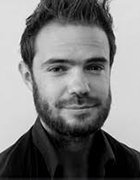
matrosovv - stock.adobe.com
NUS students learn to handle agitated patients through VR
Medical and nursing students at the National University of Singapore’s medical school will soon don virtual reality headsets to learn how to handle agitated patients
Medical and nursing students at the National University of Singapore’s Yong Loo Lin School of Medicine (NUS Medicine) will soon don virtual reality (VR) headsets to learn how to handle patients who are facing stress, anxiety and depression through a virtual simulation programme which kicks off next month.
The Virtual Reality in Agitation Management (VRAM) programme lets students play the role of a healthcare worker in charge of a ward, attending to a patient who is creating a scene while experiencing drug-induced psychosis with hallucinations and paranoia.
Distractors typically seen in an on-call setting are included in the virtual environment, including requests from nurses and family members to follow up on certain tasks, noise from a television in the background, and people who gather around the scene.
“Students will have to de-escalate the situation by removing objects that could possibly further agitate the patient, choosing the right words to say to patients, and making decisions, such as the correct dosage of medication and the right time to administer treatment and physical restraint,” said Cyrus Ho, an assistant professor at the department of psychological medicine at NUS Medicine who led the programme.
Ho’s team, which comprises medical and nursing staff and students, as well as the National University Hospital, started working on VRAM in March 2020.
Trials were subsequently conducted from August 2021, mainly for a small group of medical and nursing students who were learning about psychiatry and mental health. Further adjustments incorporating feedback from students and other educators within the team were then made.
Based on surveys conducted before and after the trials, roughly 90% of students expressed increased confidence in managing and communicating with agitated patients.
“Prior to this programme, we have never learnt how to realistically handle an agitated patient, and work together as a team in such situations,” said Lim Kia Teng, a medical student who participated in the trials.
“When facing an agitated patient and when under pressure, knowing what to say and do to keep everyone safe is crucial. Going through VRAM has allowed me to come face to face with an agitated patient within a safe space, with close guidance from our tutors,” Lim added.
NUS has prepared 13 sets of VR gear that students can borrow to practise at home as the software is accessible to them without the need for it to be connected to a desktop computer. A total of 300 medical students and 300 nursing students are expected to go through the programme each year.
VRAM follows an earlier VR project spearheaded by NUS that lets nursing students practise clinical procedures through VR headsets as much as they wish in their own time and in the comfort of their own homes. The project was expected to reduce the cost and manpower of operating physical simulation labs.
Read more about VR and AR in APAC
- Singapore neurosurgeons are testing the use of Microsoft’s HoloLens 2 mixed reality headset to locate brain tumours with higher precision and improve patient safety.
- PropertyGuru rolls out new capability in its FastKey platform that lets developers showcase properties to prospective buyers through 3D visualisation.
- Analysts predict that the enterprise virtual reality sector will take off over the next decade, boosted by direct government investment in the APAC region.
- Qualcomm enters into collaboration with Microsoft to design custom augmented reality chips and integrate software platforms.











